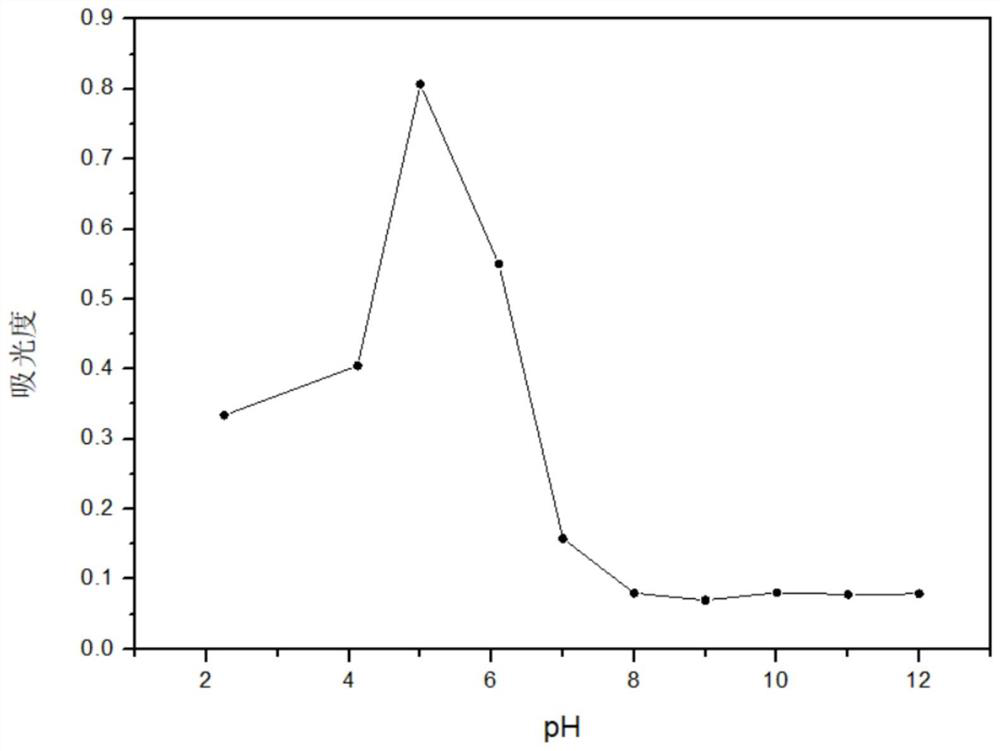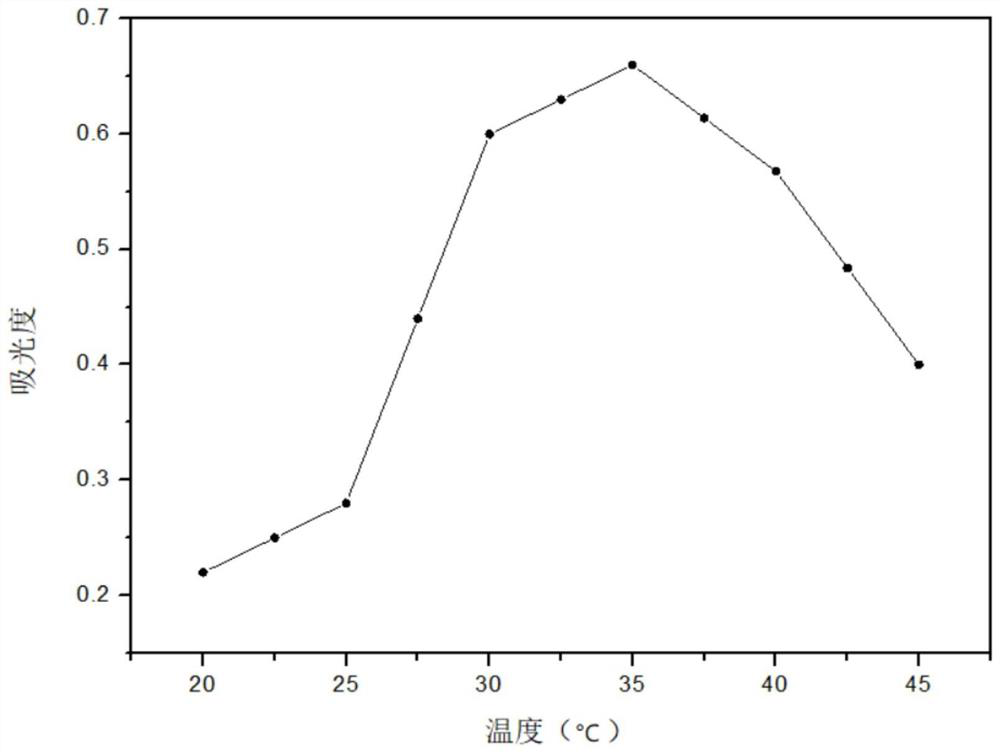Method for high-sensitivity detection of mercury ions by using novel Au/C nano-composite sensor
A nano-composite, sensitive detection technology, applied in the measurement of color/spectral properties, material analysis by observing the influence of chemical indicators, and analysis by chemical reaction of materials, etc., can solve the problems of complicated detection and so on.
- Summary
- Abstract
- Description
- Claims
- Application Information
AI Technical Summary
Problems solved by technology
Method used
Image
Examples
Embodiment 1
[0025] The present invention comprises the following steps:
[0026] (1) Ultrasonic oscillation: weigh a certain amount of carboxylated carbon nanotubes, add absolute ethanol to them, and put the resulting solution into the ultrasonic machine for oscillation, so that the carboxylated carbon nanotubes are completely dispersed in absolute ethanol;
[0027] (2) Reduction: The dispersed solution is placed on a magnetic stirrer in step (1), and a chloral auremic acid solution and sodium borohydride solution are added to it, and the gold ions contained in the chloral argonic acid solution are reduced to gold nanoparticles to obtain Au / C nanoparticles;
[0028] (3) Detection: The prepared Au / C nanoparticles are ultrasonically dispersed to obtain an Au / C nanoparticle solution, and the cosmetic solution to be measured is added to the Au / C nanoparticle solution, and the color change of the Au / C nanoparticle solution is observed to determine whether the mercury ion to be measured is containe...
Embodiment 2
[0036] In the embodiment was prepared a buffer solution with a pH range of 2.6-12. Buffer solutions of different pHs are used to adjust the pH of the reaction system and select the pH that is most conducive to the reaction.
[0037] The steps are as follows: Add 70 μL of Au / C nanocomposite dispersion (1 mg / mL) with a gold content of 8% to the centrifuge tube, add 3780 μL of buffer with different pH, 40 μL of TMB ethanol solution (20 mM), 70 μL H 2 O 2 (2 M)、40 μLHgCl 2 Solution (0.1 mM). Shake at 35 °C with a thermostatic shock box for 10 min, after which the absorbance at 652 nm is measured with a spectrophotometer.
[0038] The results show that when the pH is 2.6-5.0, the absorbance of the solution rises, and when the pH = 5.0, the absorbance reaches the maximum value, indicating that the acidic conditions are more conducive to the reaction; when the pH is 5.0-7.0, the absorbance of the solution gradually decreases; when the pH is 8.0-12.0, the absorbance of the solution is bas...
Embodiment 3
[0040]In the present embodiment, the Au / C nanocomposites with gold content of 2%, 4%, 6%, 8%, 10% were set up as five experimental groups, and a group of pure carbon nanotubes was set up as a control group for experimental exploration.
[0041] The steps are as follows: Take 70 μL of dispersion (1 mg / mL) of Au / C nanocomposites with different gold content into the centrifuge tube, add 3780 μL of buffer pH=5.0, 40 μL of TMB ethanol solution (20 mM), 70 μL H 2 O 2 (2 M)、40 μLHgCl 2 Solution (0.1 mM). Shake at 35 °C with a thermostatic shock box for 10 min, after which the absorbance at 652 nm is measured with a spectrophotometer.
[0042] The results show that the absorbance of the pure carbon nanotubes in group 1 is the lowest, and the absorbance of the solutions in groups 2-6 is higher than that of group 1, and the absorbance of 5 experimental solutions is the highest, which is significantly higher than that of other groups. The experimental results show that the catalytic activi...
PUM
 Login to View More
Login to View More Abstract
Description
Claims
Application Information
 Login to View More
Login to View More - R&D
- Intellectual Property
- Life Sciences
- Materials
- Tech Scout
- Unparalleled Data Quality
- Higher Quality Content
- 60% Fewer Hallucinations
Browse by: Latest US Patents, China's latest patents, Technical Efficacy Thesaurus, Application Domain, Technology Topic, Popular Technical Reports.
© 2025 PatSnap. All rights reserved.Legal|Privacy policy|Modern Slavery Act Transparency Statement|Sitemap|About US| Contact US: help@patsnap.com



